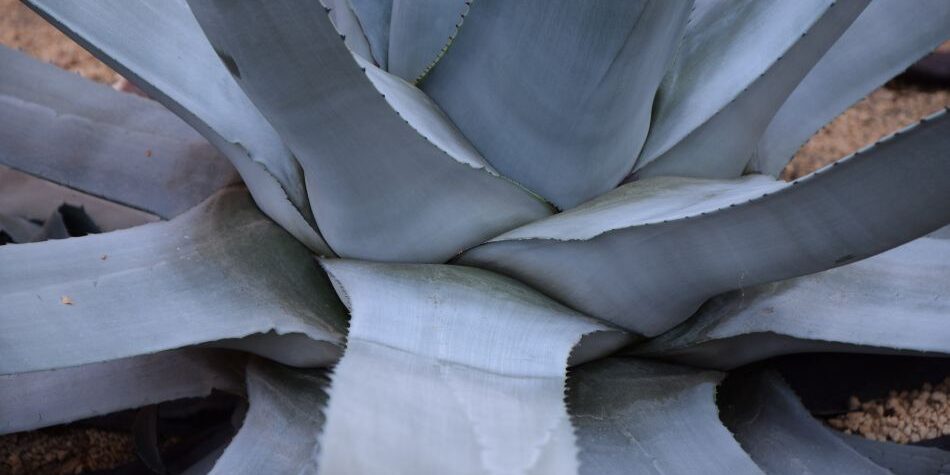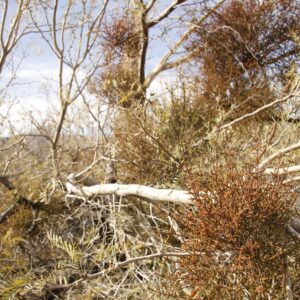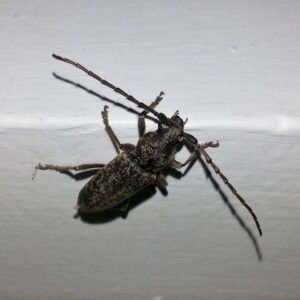
Agaves are striking accent plants in Phoenix-area gardens and a favorite in our hot, dry landscapes. A frequently-seen agave is the century plant (Agave americana). It's a large and gorgeous agave with sharp spines along its blue-green leaves and puts up a towering bloom stalk before the plant dies. Healthy agaves can grow for 25 years or more.
When mature, agaves need to be planted in soil that drains well and gets plenty of sun; young plants need a little shade. Other than that, the plants need little care and have few pests or problems.
However, there is one pest that can destroy agaves. The agave snout weevil is a large black beetle that can attack and kill agave plants, and it seems to favor the large century plant, especially as the plant prepares to bloom.
Symptoms of Agave Snout Weevil Infestation
The most common sign of agave snout weevil is damage right where leaves meet the plant's stem. The plant's lower leaves usually show the first signs of wrinkling or wilting around May. Sometimes, you can spot a tiny hole about the size of a pencil near the base of a leaf where the weevil burrowed to lay eggs. The plant can become loose in the ground if rocked gently.
Eventually, the agave collapses and dies. The nasty grubs hide under it for a while before moving to a nearby plant.
Causes
Most agave snout weevils come along for the ride in the soil of the agave plants you purchase. They also can come from infected plants in your garden or your neighbor's yard.
Agaves that are stressed are more vulnerable to snout weevils, so be sure to follow soil, water and planting instructions. For example, plant agaves so the soil line matches the one of a healthy plant's container and try not to disturb the roots too much.
Preventing and Treating Agave Snout Weevil Infestation
Always check for agave snout weevil larvae when buying new plants or choose bare-root plants to avoid introducing the snout weevil to your garden.
Once an agave is in your landscape, the best way to prevent snout weevils from infecting the plant is to make sure the soil drains well and to avoid overwatering the plants. If your agave appears to be staying too wet because of nearby drippers or soil conditions, consider moving it to a better spot in the garden (or move the irrigation). Check the agave from time to time for signs of stress or early snout weevil damage.
Another effective preventive measure is to apply a systemic insecticide with imidacloprid in early April and late May. If snout weevil infestation is caught early enough, this treatment can also help stop it from spreading. However, if your agave is about to bloom, it’s best to forgo treatment as it could affect pollinators that are attracted to the blossoms.
If you discover that one agave in your landscape has symptoms of agave snout weevil and the plant is beyond treatment, you should remove the plant as soon as possible to protect other agaves nearby. Use a cloth or tarp to catch the dirt around the plant's roots and help spot and destroy any grubs you find. You can dump the grubs into a trash bag and sprinkle them with a broad-system insecticide.
If you would prefer not to use insecticides on live plants, the best control is to dig and remove the grubs by hand. Or call a landscape professional to thoroughly remove the pests, check other agaves for signs of the weevil and treat them if necessary to prevent the grubs taking up a new home.
Although the pests favor century plants and other varieties with broader, stiffer leaves, they can attack any agave except the few varieties that have been bred to resist the snout weevil. If you want several agaves in your yard, plant the most susceptible varieties in attractive containers rather than in the ground.
More Articles Like This

Titan Tree Care is a full-service tree care company located in Anthem, AZ and serving all of North Phoenix. We offer a wide range of services to meet your tree care needs, including tree and palm trimming, tree pruning, tree removal, stump grinding, and more. We also offer insect or disease treatments and fertilization services. We are dedicated to providing high-quality, safe, and effective tree care services to our customers and work hard to ensure that your trees are healthy and look their best.





